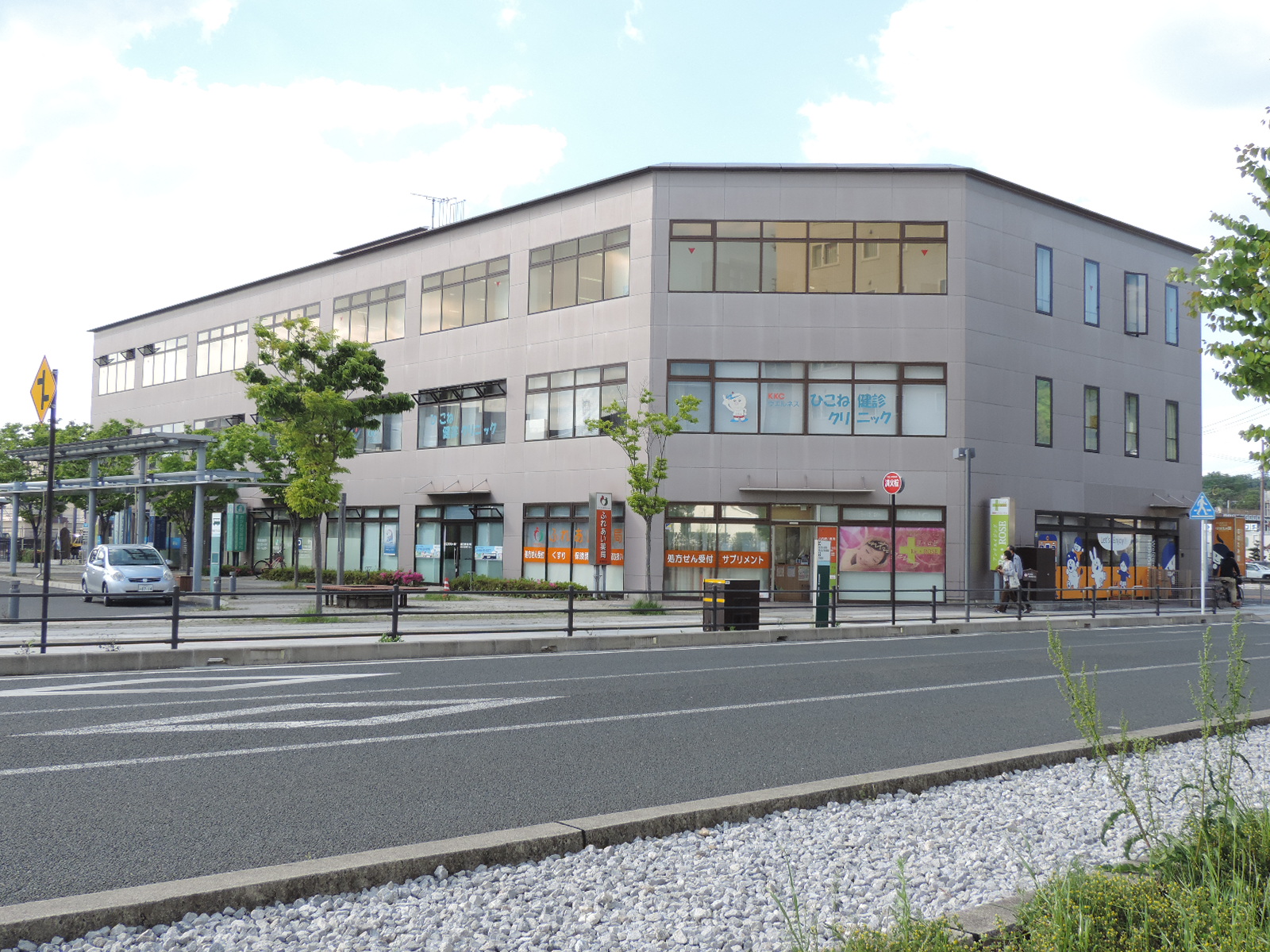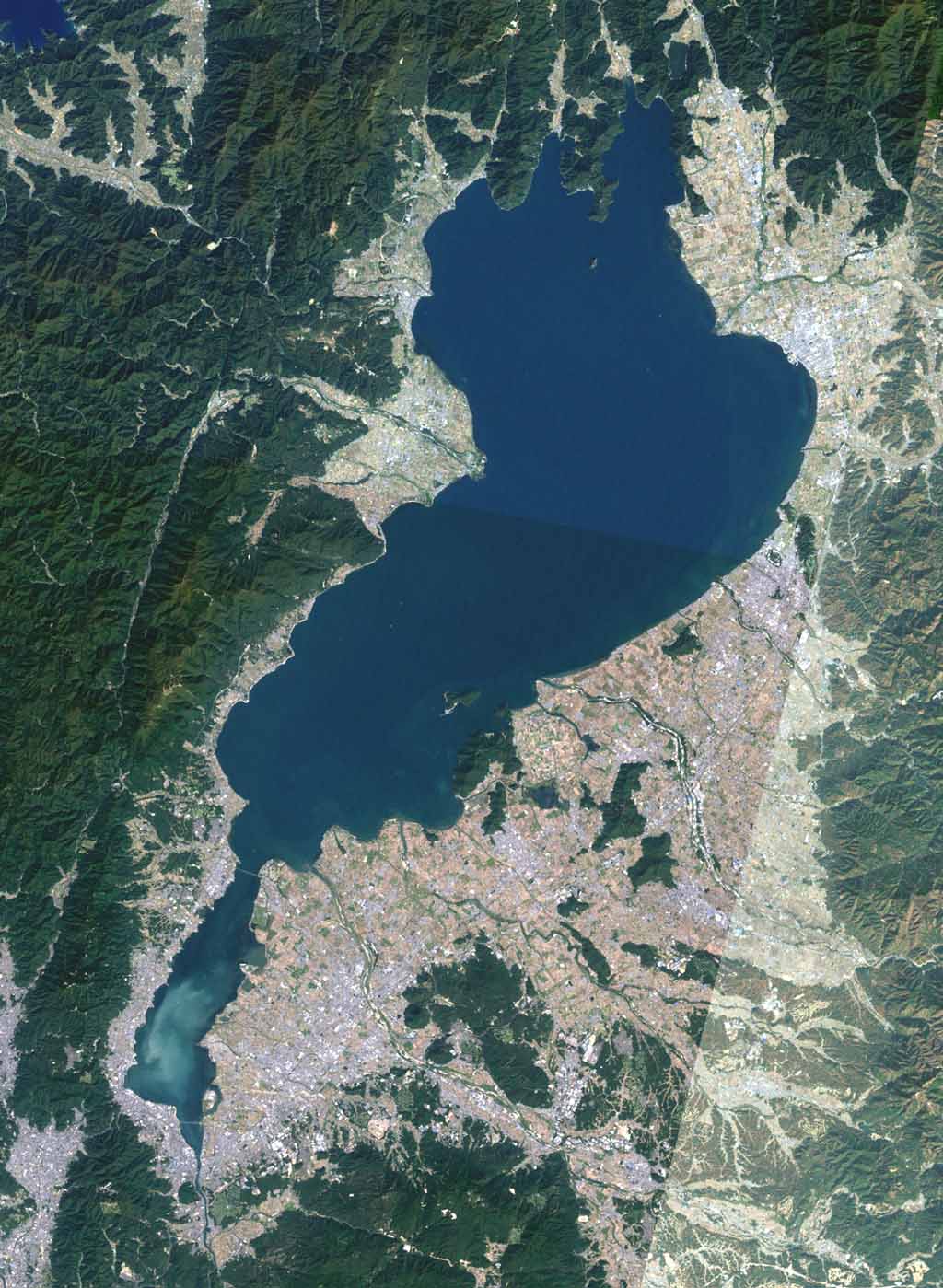|
Gokashō Station
is a passenger railway station in located in the city of Higashiōmi, Shiga Prefecture, Japan, operated by the private railway operator Ohmi Railway. The Tōkaidō Shinkansen passes over just south of Gokashō Station. Lines Gokashō Station is served by the Ohmi Railway Main Line, and is located 20.9 rail kilometers from the terminus of the line at Maibara Station. Station layout The station consists of two unnumbered side platform A side platform (also known as a marginal platform or a single-face platform) is a platform positioned to the side of one or more railway tracks or guideways at a railway station, tram stop, or transitway. A station having dual side platforms, ...s connected to the station building by a level crossing. The station building also serves as the local community center, and is unattended. Platforms Adjacent stations History Gokashō Station was opened on March 19, 1899 as . It was relocated 200 meters to the south and renamed to its pr ... [...More Info...] [...Related Items...] OR: [Wikipedia] [Google] [Baidu] |
Ohmi Railway
is a Japanese private railway company which operates in Shiga Prefecture, and a member of the Seibu group since 1943. The company is named after the Ōmi Province, the former name of the present-day Shiga. The railway is nicknamed by local users because of its noisy sound. History Ohmi Railway is the longest private railway company in Shiga. The company was founded in 1896 and started train services from Hikone to Echigawa in 1898. The company was a subsidiary of from 1926 to 1942. In 1944, the company absorbed the , now the Yokaichi Line. Lines Ohmi Railway consists of three lines: the Main Line, and two branch lines, the Yōkaichi Line and the Taga Line. The Main Line connects with the Tōkaidō Main Line (Biwako Line), the Hokuriku Main Line and the Tōkaidō Shinkansen at Maibara, the Biwako Line at Hikone, and the Kusatsu Line and the Shigaraki Kōgen Railway at Kibukawa. The Yōkaichi Line connects with the Biwako Line at Ōmi-Hachiman. At first, the Main Line was ... [...More Info...] [...Related Items...] OR: [Wikipedia] [Google] [Baidu] |
Ohmi Railway Main Line
The is a regional railway line in Shiga Prefecture operated by the private railway operator Ohmi Railway. It connects the cities of Maibara and Koka. Its alignment is parallel with the Tōkaidō Shinkansen between Takamiya and Gokasho. The line is long, extending from Maibara to Kibukawa. The line connects with the JR Central Tōkaidō Main Line and Tōkaidō Shinkansen, and the JR West Hokuriku Main Line and Biwako Line at Maibara, and the JR West Kusatsu Line and the Shigaraki Kōgen Railway Shigaraki Line at Kibukawa. History The Hikone to Yokaichi section opened in 1898, reaching Kibukawa in 1900. The Hikone to Takamiya section was electrified at 600 V DC in 1925, with the Takamiya to Kibukawa section electrified at 1,500 V DC in 1928, and the Hikone to Takamiya section raised to that voltage at the same time. The Hikone to Maibara section opened in 1931 following the construction of the 340 m Sawayama Tunnel, electrified from opening. Transport of postal items cea ... [...More Info...] [...Related Items...] OR: [Wikipedia] [Google] [Baidu] |
Railway Station
Rail transport (also known as train transport) is a means of transport using wheeled vehicles running in railway track, tracks, which usually consist of two parallel steel railway track, rails. Rail transport is one of the two primary means of land transport, next to road transport. It is used for about 8% of passenger and rail freight transport, freight transport globally, thanks to its Energy efficiency in transport, energy efficiency and potentially high-speed rail, high speed.Rolling stock on rails generally encounters lower friction, frictional resistance than rubber-tyred road vehicles, allowing rail cars to be coupled into longer trains. Power is usually provided by Diesel locomotive, diesel or Electric locomotive, electric locomotives. While railway transport is capital intensity, capital-intensive and less flexible than road transport, it can carry heavy loads of passengers and cargo with greater energy efficiency and safety. Precursors of railways driven by human or an ... [...More Info...] [...Related Items...] OR: [Wikipedia] [Google] [Baidu] |
Shiga Prefecture
is a landlocked prefecture of Japan in the Kansai region of Honshu. Shiga Prefecture has a population of 1,398,972 as of 1 February 2025 and has a geographic area of . Shiga Prefecture borders Fukui Prefecture to the north, Gifu Prefecture to the northeast, Mie Prefecture to the southeast, and Kyoto Prefecture to the west. Ōtsu is the capital and largest city of Shiga Prefecture, with other major cities including Kusatsu, Nagahama, and Higashiōmi. Shiga Prefecture encircles Lake Biwa, the largest freshwater lake in Japan, and 37% of the total land area is designated as Natural Parks, the highest of any prefecture. Shiga Prefecture's southern half is located adjacent to the former capital city of Kyoto and forms part of Greater Kyoto, the fourth-largest metropolitan area in Japan. Shiga Prefecture is home to Ōmi beef, the Eight Views of Ōmi, and Hikone Castle, one of four national treasure castles in Japan. History Shiga was known as Ōmi Province or Gōshū bef ... [...More Info...] [...Related Items...] OR: [Wikipedia] [Google] [Baidu] |
Tōkaidō Shinkansen
The is a Japanese high-speed rail line that is part of the nationwide Shinkansen network. Along with the San'yō Shinkansen, it forms a continuous high-speed railway through the Taiheiyō Belt, also known as the Tokaido corridor. Opening in 1964, running between Tokyo Station, Tokyo and Shin-Ōsaka Station, Shin-Ōsaka, it was the world's first high-speed rail line, and it remains one of the world's busiest. Since 1987, it has been operated by the Central Japan Railway Company (JR Central), prior to that by Japanese National Railways (JNR). There are three types of services on the line: from fastest to slowest, they are the limited-stop ''Nozomi (train), Nozomi'', the semi-fast ''Hikari (train), Hikari'', and the all-stop ''Kodama (train), Kodama''. Many ''Nozomi'' and ''Hikari'' trains continue onward to the San'yō Shinkansen, going as far as Fukuoka, Fukuoka, Fukuoka's Hakata Station. The different services operate at mostly the same speed. The line was named a joint List o ... [...More Info...] [...Related Items...] OR: [Wikipedia] [Google] [Baidu] |
Maibara Station
is an interchange passenger railway station located in the city of Maibara, Shiga, Japan. On the border between West Japan Railway Company (JR West) and Central Japan Railway Company (JR Central), it is jointly operated by both companies, along with the private railway operator Ohmi Railway. It is also a freight depot for the Japan Freight Railway Company (JR Freight). Lines Maibara Station is served by the JR West Hokuriku Main Line and the Biwako Line section of the Tōkaidō Main Line. It is also served by the JR Central Tōkaidō Shinkansen and the JR Central portion of Tōkaidō Main Line towards and . It is 445.9 kilometers from Tokyo Station and is the southern terminus of the 176.6 kilometer Hokuriku Main Line to . It is also the terminus for the 44.7 kilometer Ohmi Railway Main Line to . Station layout JR The JR portion of the station consists of three island platforms with six tracks for the Tōkaidō Line and the Hokuriku Line. There is an island platform, a ... [...More Info...] [...Related Items...] OR: [Wikipedia] [Google] [Baidu] |
Side Platform
A side platform (also known as a marginal platform or a single-face platform) is a platform positioned to the side of one or more railway tracks or guideways at a railway station, tram stop, or transitway. A station having dual side platforms, one for each direction of travel, is the basic design used for double-track railway lines (as opposed to, for instance, the island platform where a single platform lies between the tracks). Side platforms may result in a wider overall footprint for the station compared with an island platform, where a single width of platform can be shared by riders using either track. In some stations, the two side platforms are connected by a footbridge or tunnel to allow safe access to the alternate platform. While a pair of side platforms is often provided on a dual-track line, a single side platform is usually sufficient (trains are usually only boarded from one side) for a single-track line. Layout Where the station is close to a level crossing (g ... [...More Info...] [...Related Items...] OR: [Wikipedia] [Google] [Baidu] |
Track Ballast
Track ballast is the material which forms the trackbed upon which railroad ties (UK: sleepers) are laid. It is packed between, below, and around the ties. It is used to bear the compression load of the railroad ties, rails, and rolling stock; to facilitate drainage; and keep down vegetation that can compromise the integrity of the combined track structure. Ballast also physically holds the track in place as the trains roll over it. Not all types of railway tracks use ballast. A variety of materials have been used as track ballast, including crushed stone, washed gravel, bank run (unwashed) gravel, torpedo gravel (a mixture of coarse sand and small gravel), slag, chats, coal cinders, sand, and burnt clay. The term "ballast" comes from a nautical term for the stones used to stabilize a ship. Construction The appropriate thickness of a layer of track ballast depends on the size and spacing of the ties, the amount of traffic on the line, and various other factors. Track ballast ... [...More Info...] [...Related Items...] OR: [Wikipedia] [Google] [Baidu] |
Railway Stations In Japan Opened In 1899
Rail transport (also known as train transport) is a means of transport using wheeled vehicles running in tracks, which usually consist of two parallel steel rails. Rail transport is one of the two primary means of land transport, next to road transport. It is used for about 8% of passenger and freight transport globally, thanks to its energy efficiency and potentially high speed.Rolling stock on rails generally encounters lower frictional resistance than rubber-tyred road vehicles, allowing rail cars to be coupled into longer trains. Power is usually provided by diesel or electric locomotives. While railway transport is capital-intensive and less flexible than road transport, it can carry heavy loads of passengers and cargo with greater energy efficiency and safety. Precursors of railways driven by human or animal power have existed since antiquity, but modern rail transport began with the invention of the steam locomotive in the United Kingdom at the beginning of the 19th ... [...More Info...] [...Related Items...] OR: [Wikipedia] [Google] [Baidu] |





